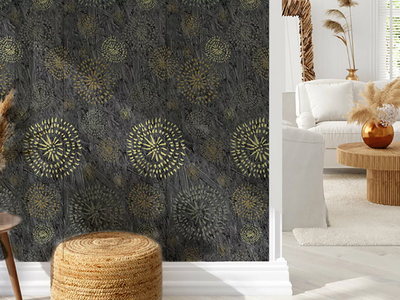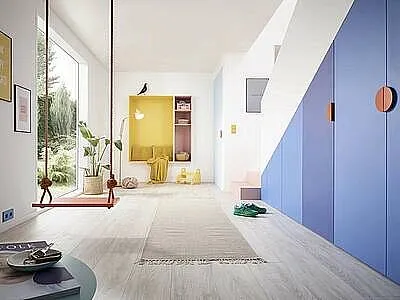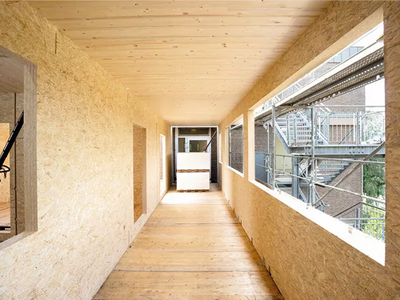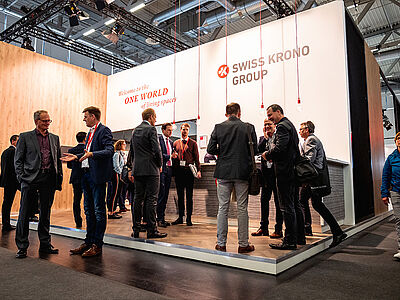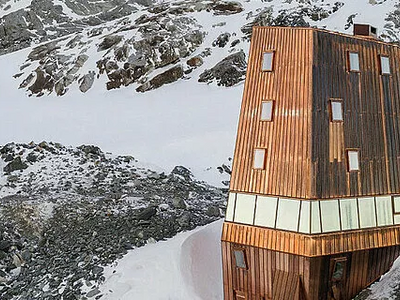Fire Protection in Timber Construction with OSB
The belief that wood and engineered wood are anathema to fire protection stubbornly persists because “after all, wood burns!” But it isn’t that simple. Especially when comparing wood with other building materials, it is high time to reassess its undeserved reputation and start regarding it as simply one possibility among several – and, above all, as an alternative that definitely offers a number of advantages. Especially for meeting ecological challenges, these days there is simply no getting around timber construction. The building codes of Germany’s states are in the process of being updated to take this into account. Loadbearing, reinforcing and interior walls made of exposed wood may now also be used for building classes 4 and 5 (taller and subterranean buildings with larger units) in conjunction with appropriate fire protection measures. State-of-the-art wood and wood-based construction materials pave the way for this. Nevertheless, it is essential to regard the following aspects in a differentiated manner and identify appropriate solutions:
1. Wood resists fire.
Nature knows how to protect itself. When a tree catches fire, this doesn’t necessarily kill it. It has a protected core from which it can regenerate afterwards. This is a natural process. Wood doesn’t simply go up in smoke; rather, it initially responds by charring to form a fire-resistant layer. This layer protects both the wood and its surroundings because this blackened layer prevents high temperatures from penetrating the wood. It also helps to slow the spread of the fire.
2. Although wood is combustible, it burns in predictable ways.
Reinhard Eberl-Pacan, a certified expert on fire protection for timber structures, always stresses in his presentations that wood burns in a “good-natured manner”. By this, he means that we can very precisely know and predict how it will burn. This is in stark contrast to, for example, external thermal insulation composite systems (ETICS), which burn uncontrollably, or steel, which at some point abruptly and unpredictably buckles. It is estimated that wood burns at a rate of about 0.7 mm per minute on average. In the case of a solid wood beam, for example, its cross-section diminishes by 21 mm on all sides in 30 minutes. But the remaining part of the beam can continue to bear the load. This means that it often achieves a resistance-to-fire class of F30 even without coating or other measures – the wood is simply naturally endowed with this ability. It is therefore quite easy to calculate how long wood is able to perform its structural and loadbearing tasks in the event of a fire.
3. Tested fire protection structures provide security.
For building classes 3 to 5 (building class 3 in Germany comprises all above-ground buildings with a height up to 7 m), all components belonging to resistance-to-fire classes REI 30 to REI 90 can be implemented with officially approved constructions. SWISS KRONO has developed fire protection wall modules for a variety of requirements and situations in which all of the materials used are coordinated to yield optimal results. Here are some examples:
4. Flame-retardant board for meeting special requirements
Public buildings, for example, are subject to the requirement that not only an assembled structure as a whole must be assigned to a fire protection class, but also all of its constituent parts. For these applications, SWISS KRONO has developed a flame-retardant OSB board which complies with reaction-to-fire class C-s2, d0 (previously B1) in accordance with EN 13501-1: SWISS KRONO OSB/3 stop fire EN300.
Explanation of the reaction-to-fire class:
C – flame retardant
s2 – moderate smoke development
d0 – no burning droplets
SWISS KRONO OSB/3 stop fire thus complies with the stricter German and European requirements for public buildings and may be used in them.
As this product is completely treated with flame retardant during manufacture, both on the outside and in the inside, in contrast to many other engineered wood products this board also remains flame-resistance after being worked and even on edges and at corners.
5. Architectural measures for enhanced fire protection in timber construction
Architects and fire protection specialists are called upon to work together in order to come up with creative solutions for meeting special challenges. Differing requirements in different states prevent taking a consistent approach for all multistorey buildings, especially those belonging to building classes four and five. For the most part, these require highly fire-resistant or fireproof loadbearing constructions. The SWISS KRONO planning tool, incidentally, is an enormous help for this, as it consistently integrates the current requirements of the building codes of all German states.
- Fire curtains
- Staggered windows
- Surrounding steel plates with suspended wood cladding
- Material with an appropriate thickness for solid wood constructions to provide the required fire protection via the burn rate
There are already a number of trailblazing examples of what modern timber construction can be like. They impressively demonstrate that it is also possible to build multistorey buildings with wood. We should take our orientation from these examples, because timber construction is the wave of the future.

